How do tsunamis form? What to know after Russia's earthquake
What causes a tsunami, and how could a powerful earthquake like the one off Russia's coast trigger massive waves?Wednesday, July 30th 2025, 8:42 am
What Is a Tsunami and How Does It Form?
A tsunami is a series of ocean waves caused by a sudden disturbance, usually an underwater earthquake, that pushes a large amount of water up or down. Most major tsunamis are triggered in subduction zones, where one tectonic plate dives beneath another. 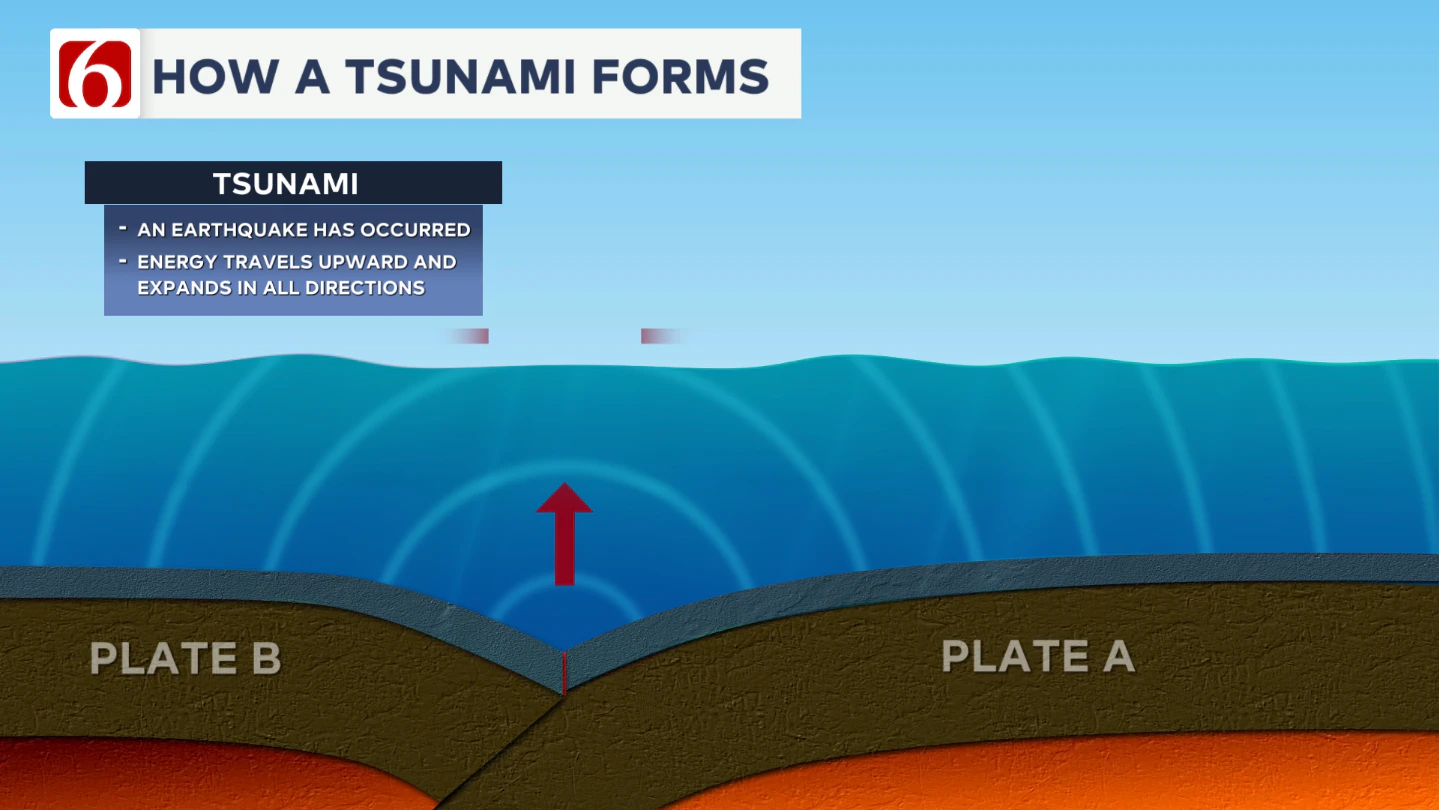 This vertical displacement of the seafloor lifts or drops massive volumes of water almost instantly. That vertical movement sends waves racing across the ocean, sometimes faster than a jet.
This vertical displacement of the seafloor lifts or drops massive volumes of water almost instantly. That vertical movement sends waves racing across the ocean, sometimes faster than a jet.
In deep water, you might barely notice them, but as they reach the coast, the waves slow down and pile up, especially if the shoreline is shallow or gently sloped. 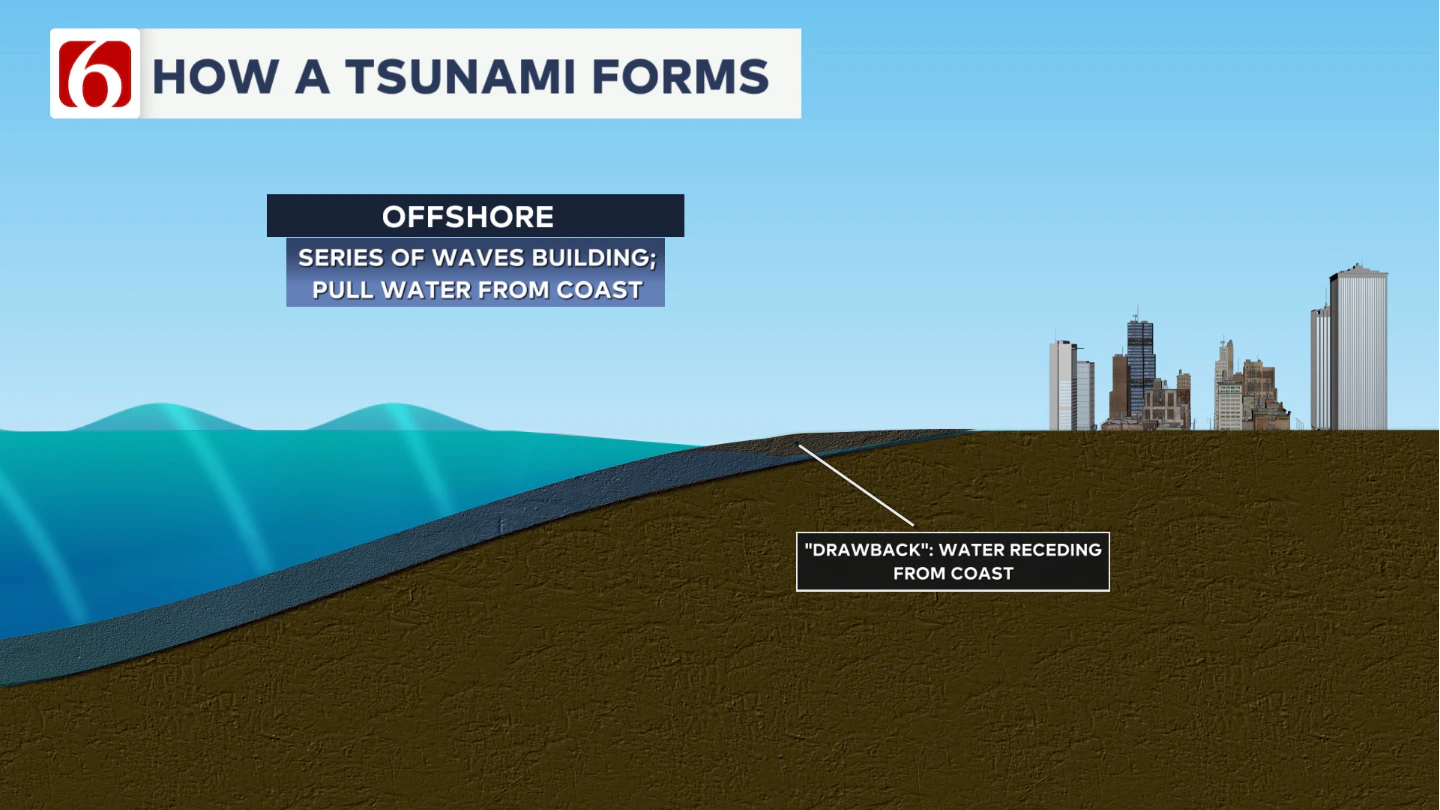 In some cases, the ocean may dramatically recede from the shore just before the wave strikes: a dangerous warning sign of what's coming.
In some cases, the ocean may dramatically recede from the shore just before the wave strikes: a dangerous warning sign of what's coming.
That buildup can cause the water to surge inland with powerful and sometimes devastating force.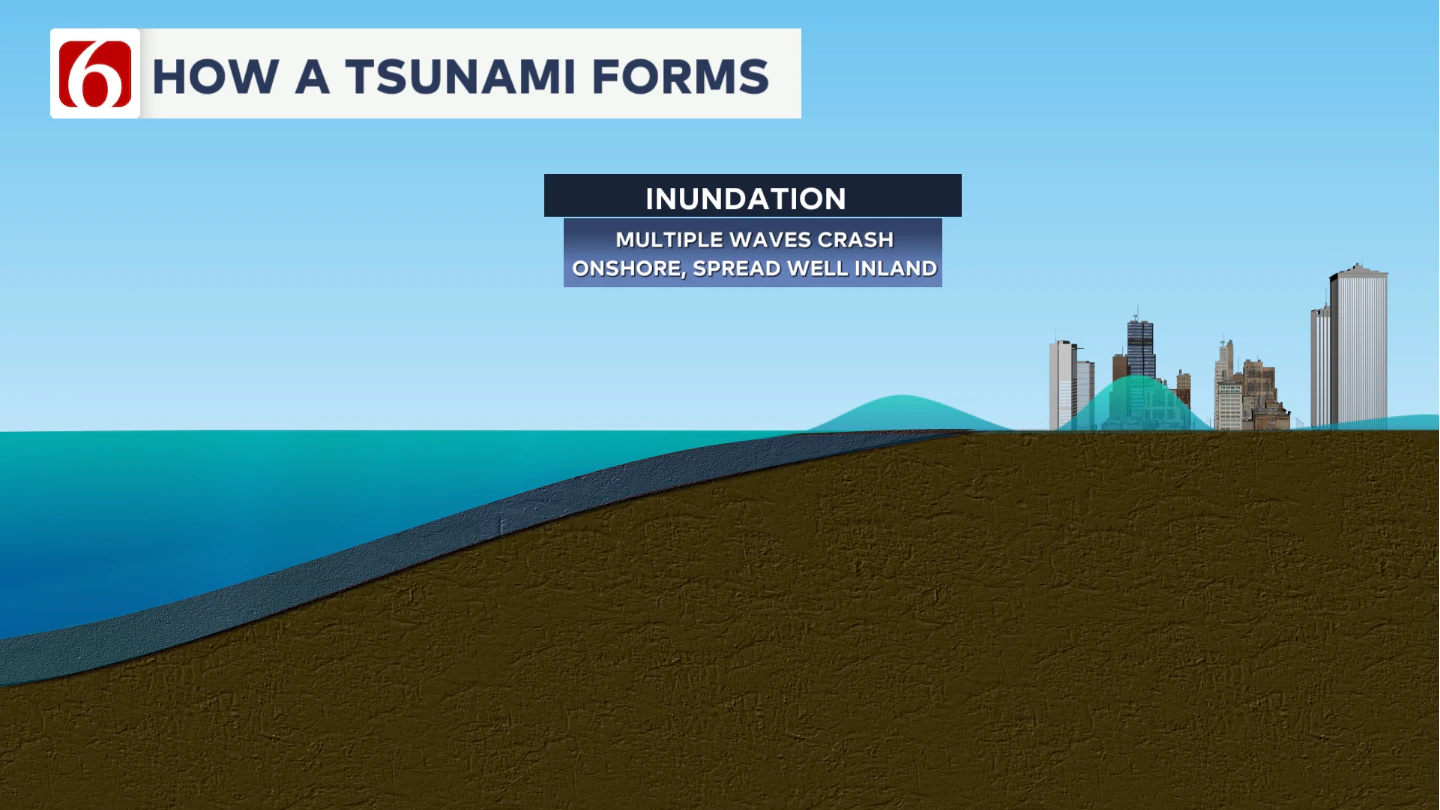
What Are the Differences Between a Tsunami Warning and a Tsunami Advisory?
According to the National Weather Service (NWS), a tsunami warning is issued when a tsunami capable of causing widespread flooding and significant danger to life and property is imminent, expected, or already occurring, prompting immediate protective actions like evacuation.
A tsunami advisory means a tsunami with strong currents or waves dangerous to those in or near the water is expected or occurring, but widespread flooding is not likely. In advisory areas, people should stay out of the water and away from beaches and harbors until the threat passes.
How Large was the Russia Earthquake?
A powerful magnitude 8.8 earthquake struck off Russia’s Kamchatka Peninsula Tuesday evening (CDT), triggering widespread tsunami alerts across the Pacific.
The quake hit around 75 miles southeast of Petropavlovsk-Kamchatsky and was shallow, just 7 to 12 miles deep, intensifying the shaking and tsunami potential.
RELATED STORY: Tsunami waves hit Japan, Hawaii and Alaska after an 8.8 magnitude quake off Russia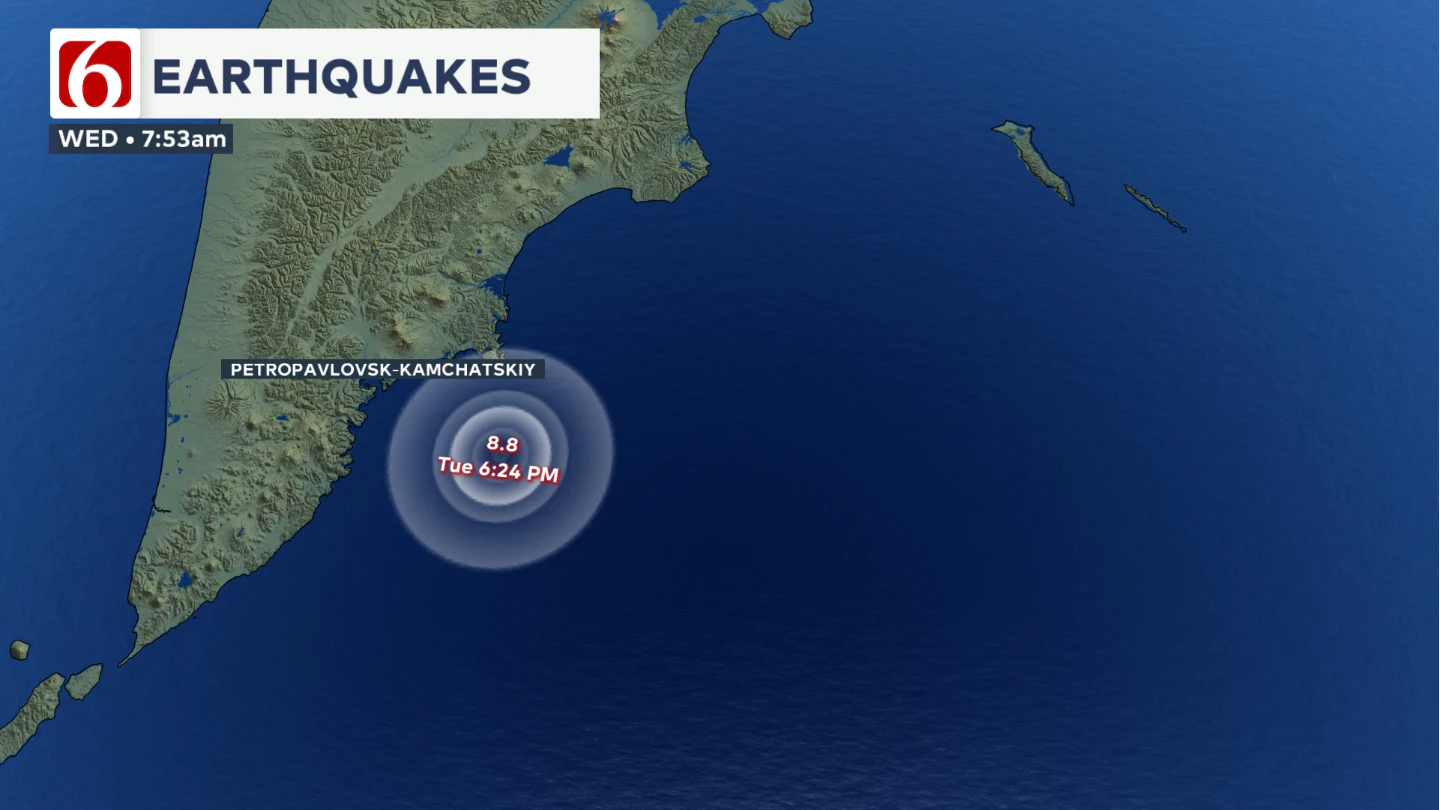
Waves up to 13 feet were reported along parts of the Russian coast, prompting evacuations in coastal towns like Severo-Kurilsk.
Tsunami warnings and advisories were issued across the Pacific, including Hawaii, Alaska, Japan, and the U.S. West Coast. Hawaii saw waves over 5 feet in some areas, while smaller surges reached as far as California and Japan.
This was one of the strongest quakes globally in recent history. Here's a list of the top ten earthquakes based on data from the United States Geological Survey (USGS), the National Centers for Environmental Information (NCEI/NOAA), and historical earthquake catalogs (like those compiled by USGS and academic seismology sources):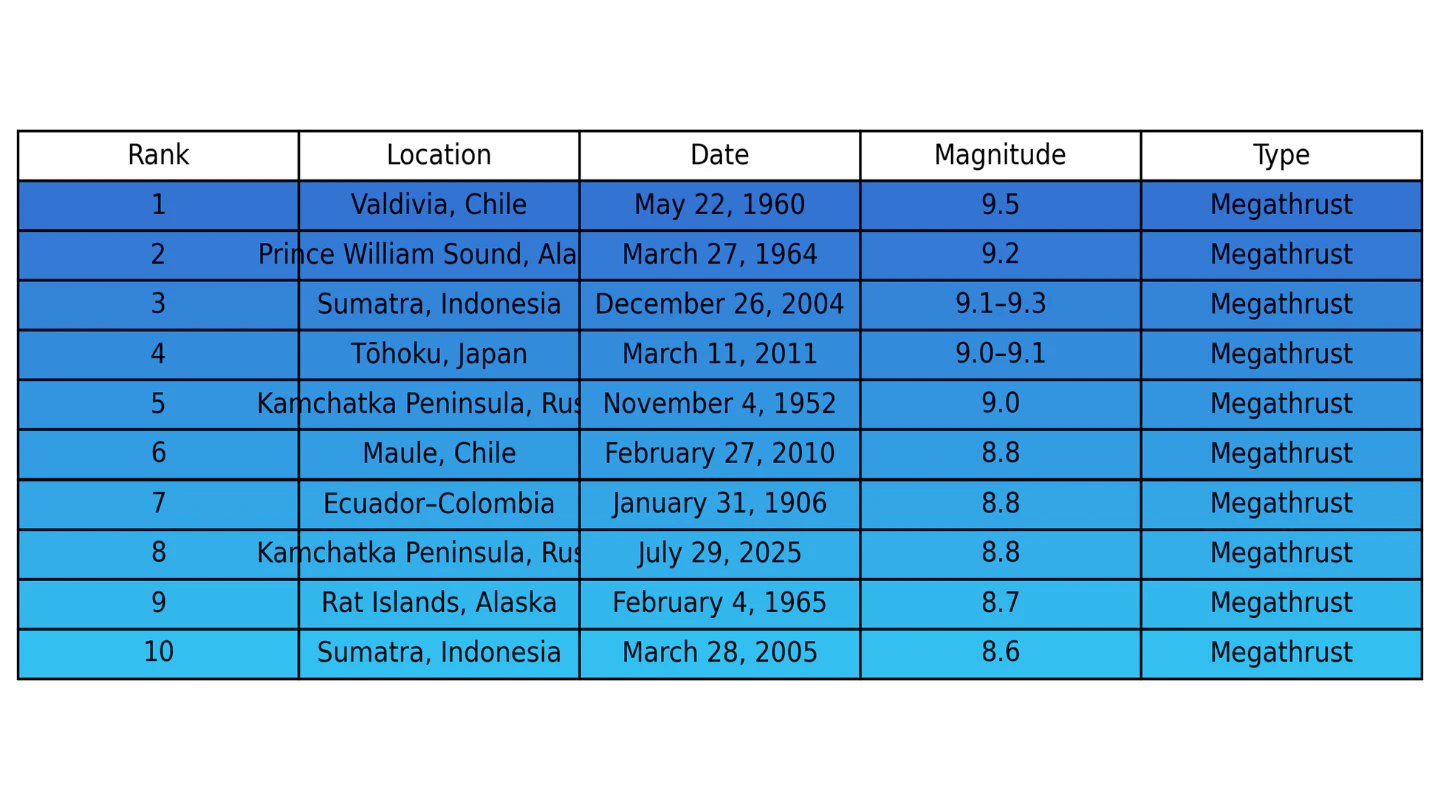
How Many Aftershocks Have Occurred Since the Main quake?
As of the latest reports, the United States Geological Survey (USGS) has recorded at least four significant aftershocks with magnitudes of 6.0 or higher.
Additionally, numerous aftershocks have been detected, indicating ongoing seismic activity in the region. The frequency and intensity of these aftershocks are consistent with the expectations following such a powerful megathrust earthquake.


Alan Crone
An integral part of the News On 6 Weather Team since 2006, Alan Crone keeps Oklahomans safe and informed about morning weather each weekday on Six in the Morning. He’s always keeping an eye on the sky for both severe weather and just weather that’s going to make your day a bit more interesting.
More Like This
July 30th, 2025
September 4th, 2025
September 4th, 2025
Top Headlines
September 4th, 2025
September 4th, 2025
September 4th, 2025







